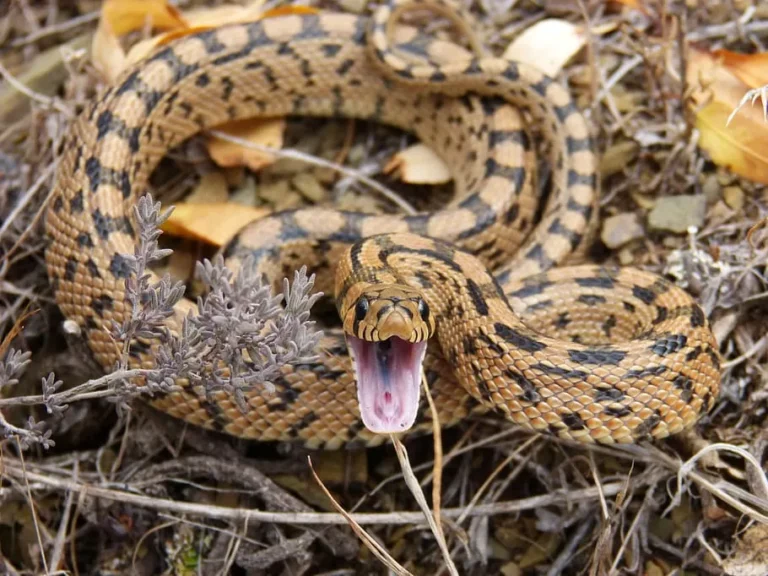American Badger Vs European Badger Who Would Win, Overall Comparison
American badgers and European badgers, both members of the Mustelidae family, exhibit distinct characteristics that set them apart in the animal kingdom. American badgers, known for their tenacious aggression, and European badgers, characterized by their larger size, provide an intriguing scenario for a hypothetical confrontation. This analysis explores their taxonomy, appearance, size, weight, and aggression to speculate on the potential outcome of a one-on-one clash between these two badger species.
American Badger vs European Badger: Assessing the Potential Winner in a Face-Off
In a hypothetical one-on-one confrontation between an American badger and a European badger, the European badger is likely to emerge victorious, primarily due to its larger size and weight, despite the American badger’s renowned aggressiveness.
I). Size and Weight Advantage:
– European badgers, generally larger and heavier than their American counterparts, possess a considerable advantage in size. This size difference establishes a significant edge in confrontations, where the European badger’s larger frame may give it an upper hand over the American badger.
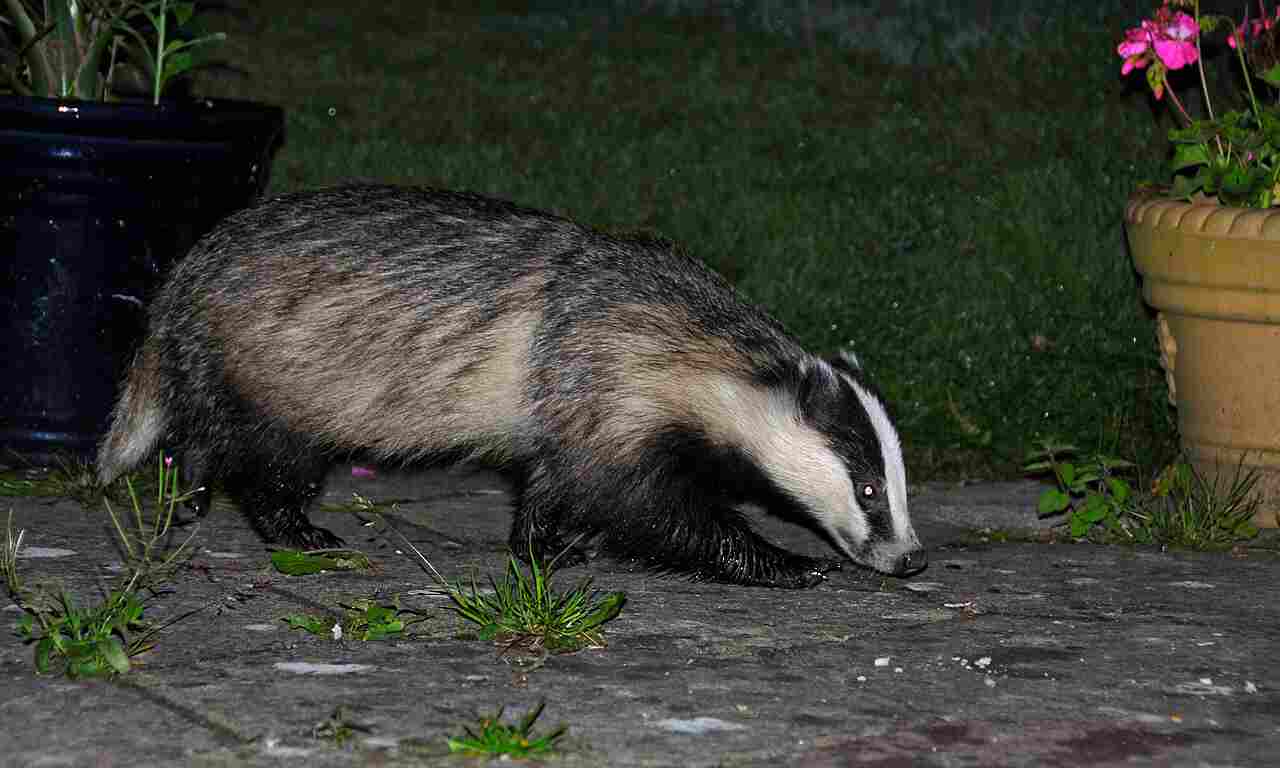
II). Aggressiveness of the American Badger:
– While the American badger’s aggressiveness is a noteworthy trait, it may not fully compensate for the size and weight disparity. The European badger’s larger physical presence could serve as a formidable defense against the American badger’s aggression, potentially neutralizing its impact.
III). Overall Dominance:
– The size and weight advantage of the European badger contribute to its overall dominance, potentially allowing it to control the dynamics of a confrontation. Despite the American badger’s reputation for aggression, the sheer physical stature of the European badger may prove decisive in securing victory in a one-on-one clash.
*Details of Comparison
| Aspect | American Badger (Taxidea taxus) |
European Badger (Meles meles)
|
| Taxonomy | Mustelidae, Genus Taxidea |
Mustelidae, Genus Meles
|
| Appearance | Grizzled gray or brown fur, white stripe on face |
Black and white fur, striped face
|
| Size | 23-30 inches (58-76 cm) |
28-37 inches (70-94 cm)
|
| Weight | 9-26 lbs (4-12 kg) |
15-33 lbs (7-15 kg)
|
| Bite Force | Strong for digging and hunting |
Robust for digging and feeding
|
| Offensive Advantages | Strong claws, powerful bite |
Sharp claws, strong bite
|
| Defensive Advantages | Tough, loose skin |
Well-developed claws, strong bite
|
| Speed | Up to 19 mph (30 km/h) |
Generally slower
|
| Agility | Agile with rapid movements |
Agile, especially in burrows
|
| Physical Capacity | Robust for digging and hunting |
Well-adapted for digging and hunting
|
| Habitat Preference(s) | Open grasslands, meadows, agriculture |
Mixed woodlands, scrublands, pasture
|
| Tracks | Distinctive with claw marks |
Shows claw marks in tracks
|
| Lifespan | 4-5 years in the wild |
8-10 years or more in the wild
|
| Mode of Feeding | Carnivorous, hunting small mammals |
Omnivorous, includes various prey
|
| Social Behavior | Generally solitary |
Often lives in social clans
|
| Reproduction | Litters of 1-5 cubs |
Larger litters, 1-6 cubs
|
| Parental Behavior | Females care for young in burrow |
Both parents contribute in communal burrow
|
| Proximity to Humans | Inhabits rural areas |
Can be found in urban and suburban areas
|
| Behavior Toward Humans | Typically avoids, defensive if provoked |
Generally shy, may adapt to human presence
|
| Danger Posed to Humans | Rarely poses threat, defensive if provoked |
Generally not considered dangerous, may defend
|
| Associated Precautions | Caution in encounters, avoid provoking |
Respect space, avoid unnecessary interactions
|
| Conservation Status | Relatively stable, regional concerns |
Generally not at risk, local threats possible
|
Key Points:
- Both badger species share a Mustelidae family and exhibit grizzled fur patterns.
- European badgers are generally larger, have a longer lifespan, and exhibit more social behaviors.
- American badgers show adaptations for speed and have a more solitary lifestyle.
- Habitat preferences differ, with American badgers favoring open areas, while European badgers adapt to various environments, including urban settings.
- European badgers generally have larger litters and exhibit more cooperative parental behavior.
- Conservation statuses vary by region, highlighting the need for localized conservation efforts.
1. Taxonomy:
American Badger (Taxidea taxus): Belongs to the family Mustelidae and genus Taxidea.
European Badger (Meles meles): Part of the family Mustelidae and genus Meles.
2. Appearance:
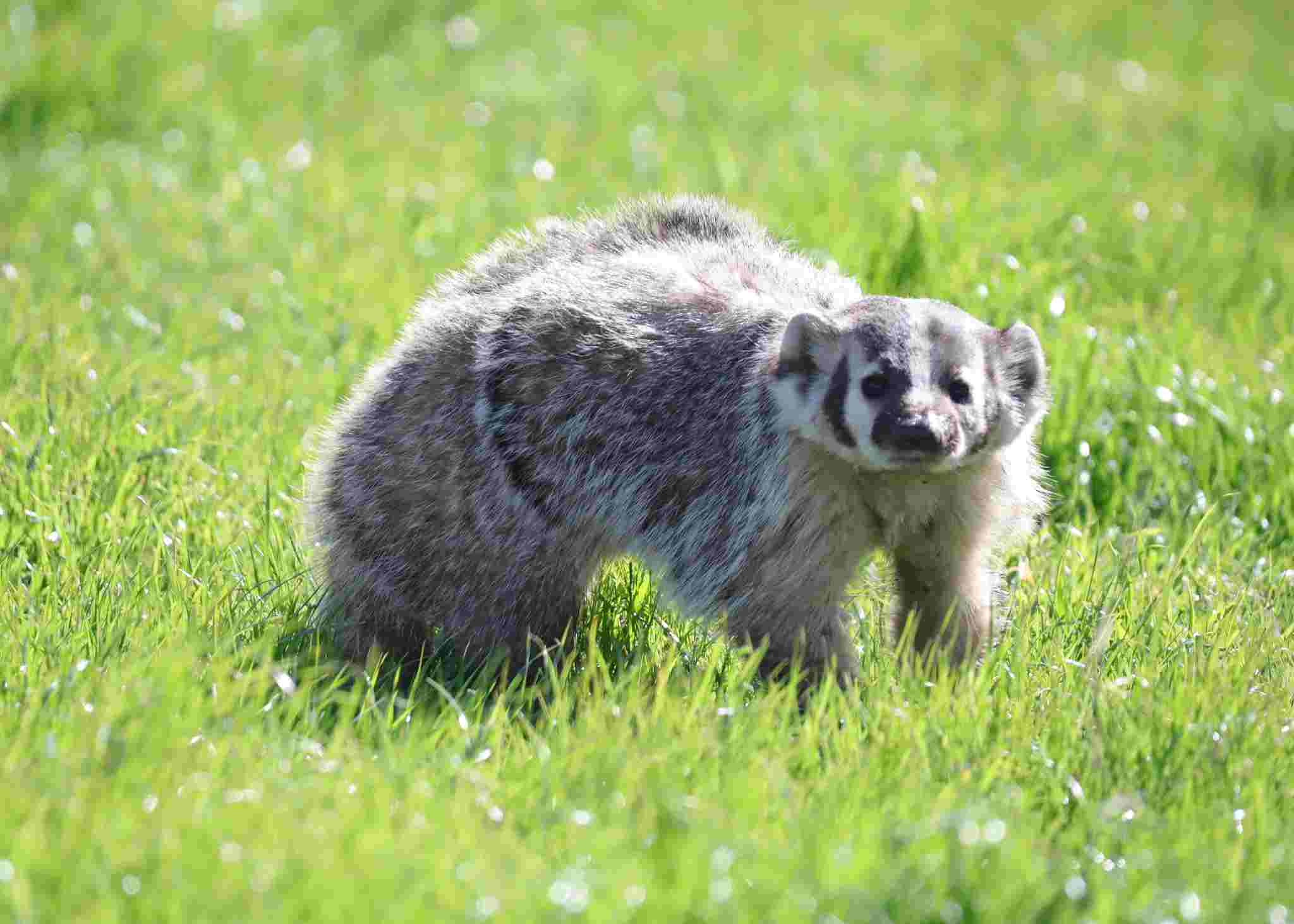
American Badger:
Short legs, stout body, distinctive facial markings.
Grizzled gray or brown fur with a white stripe running from the head to the tail.
European Badger:
Compact build, black and white facial markings.
Grizzled fur, generally black and white, with a characteristic black and white striped face.
Comparison:
Both badgers share a grizzled fur pattern, but their facial markings and predominant colors differ.
Ecological Implications:
The distinct appearances may be linked to camouflage strategies, adapting to their respective habitats.
3. Size:
American Badger:
Length: 23-30 inches (58-76 cm).
European Badger:
Length: 28-37 inches (70-94 cm).
Comparison:
European badgers are generally larger than their American counterparts.
Ecological Implications:
Size differences may impact prey selection and competition for resources within their ecosystems.
4. Weight:
American Badger:
Weight: 9-26 lbs (4-12 kg).
European Badger:
Weight: 15-33 lbs (7-15 kg).
Comparison:
European badgers tend to be heavier than American badgers.
Ecological Implications:
Weight influences energy requirements, mating behaviors, and interactions with other species.
5. Bite Force:
American Badger:
Possesses a strong bite force adapted for digging.
European Badger:
Exhibits a robust bite force for digging and feeding.
Comparison:
Both badgers have powerful bites suited for their burrowing lifestyle.
Ecological Implications:
Bite force is crucial for excavating burrows and accessing food sources, impacting their roles as ecosystem engineers.
6. Physical Offensive Advantages:
American Badger:
Strong claws and powerful bite for digging and capturing prey.
European Badger:
Sharp claws and strong bite, primarily used for digging and accessing food.
Comparison:
Both badgers share offensive adaptations for burrowing and hunting.
Ecological Implications:
Offensive advantages contribute to their roles as efficient burrowers and predators, influencing ecosystem dynamics.
7. Physical Defensive Advantages:
American Badger:
Tough, loose skin provides protection during confrontations.
European Badger:
Well-developed claws and strong bite serve as defensive mechanisms.
Comparison:
While defense strategies differ, both badgers possess adaptations for protection.
Ecological Implications:
Defensive features impact interactions with predators and competitors, shaping their ecological roles.
8. Speed:
American Badger:
Can run at speeds of up to 19 mph (30 km/h).
European Badger:
Moves at a more leisurely pace, not known for high speeds.
Comparison:
American badgers exhibit faster speeds compared to their European counterparts.
Ecological Implications:
Speed influences hunting success, escape from predators, and overall ecological interactions.
9. Agility:
American Badger:
Agile with rapid movements, especially when hunting or digging.
European Badger:
Displays agility, particularly in navigating through their burrow systems.
Comparison:
Both badgers showcase agility, but specific behaviors differ.
Ecological Implications:
Agility impacts hunting efficiency, evasion of predators, and adaptation to changing environmental conditions.
10. Overall Physical Capacity:
American Badger:
Exhibits a robust build with a focus on digging and hunting.
European Badger:
Well-adapted physique for digging, hunting, and navigating burrows.
Comparison:
Both badgers possess physical capacities suited to their burrowing and predatory lifestyles.
Ecological Implications:
Their overall physical capacity contributes to their roles as ecosystem engineers and predators.
11. Habitat Preference(s):
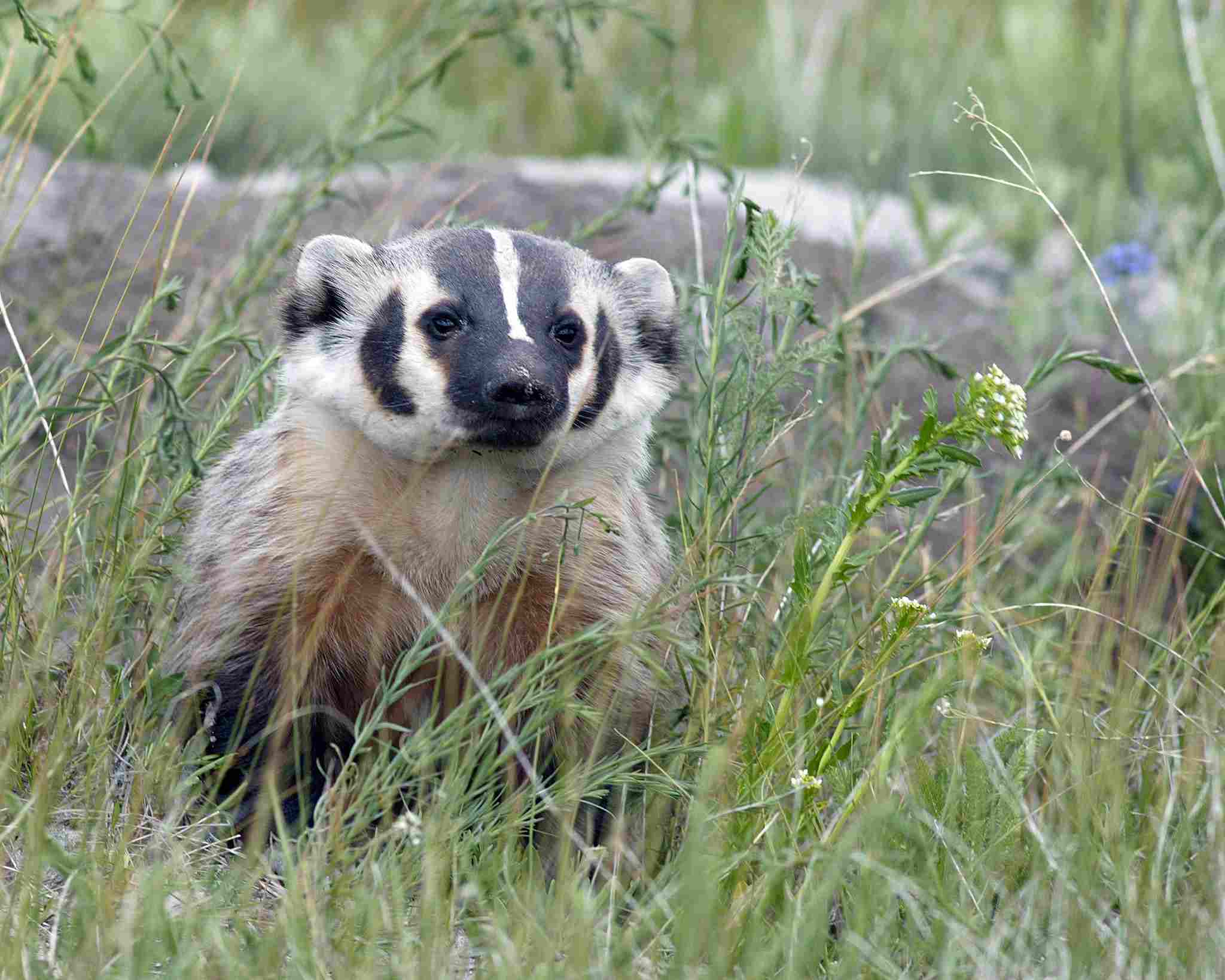
American Badger:
Thrives in open grasslands, meadows, and agricultural areas.
European Badger:
Prefers mixed woodlands, scrublands, and pasture.
Comparison:
Habitat preferences reflect their adaptation to diverse ecosystems.
Ecological Implications:
Habitat choices influence interactions with other species and ecosystem dynamics.
12. Tracks:
American Badger:
Distinctive tracks show claw marks, reflecting digging behavior.
European Badger:
Tracks often show distinct claw marks as well, reflecting burrowing activity.
Comparison:
Claw marks in tracks are a common feature for both badger species.
Ecological Implications:
Tracking patterns can be used by researchers to study behavior, distribution, and population dynamics.
13. Lifespan:
American Badger:
Typically lives 4-5 years in the wild.
European Badger:
Can have a lifespan of 8-10 years or more in the wild.
Comparison:
European badgers generally have a longer lifespan compared to American badgers.
Ecological Implications:
Lifespan impacts reproductive strategies, population dynamics, and overall ecological contributions.
14. Mode of Feeding:
American Badger:
Carnivorous diet, primarily hunting small mammals like rodents.
European Badger:
Omnivorous diet, includes earthworms, insects, small mammals, and plant matter.
Comparison:
While both badgers are carnivorous, the European badger has a more varied diet.
Ecological Implications:
Dietary differences contribute to their roles in controlling prey populations and shaping local ecosystems.
15. Social Behavior:
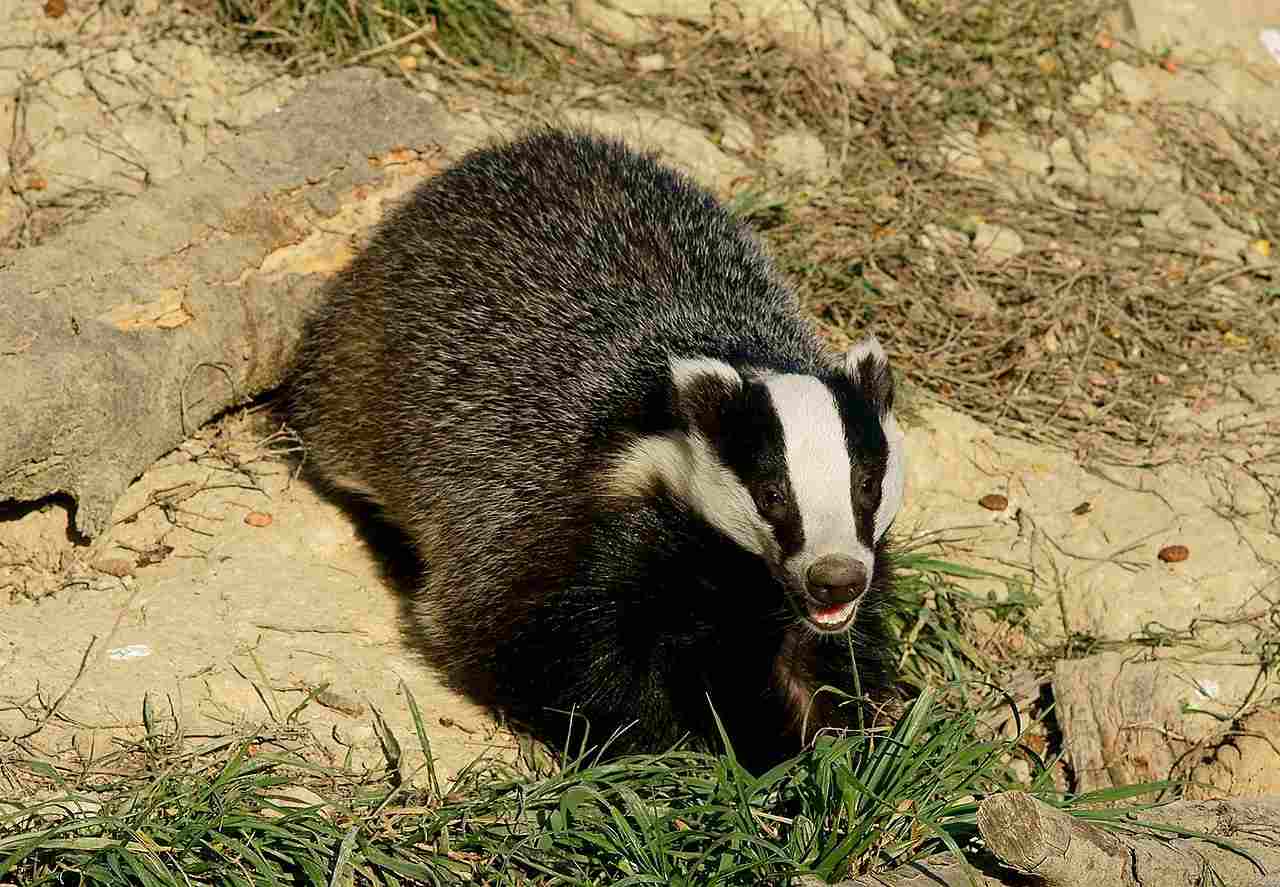
American Badger:
Generally solitary, except during the breeding season.
European Badger:
Often lives in social groups known as clans.
Comparison:
European badgers exhibit a more social lifestyle compared to the more solitary American badger.
Ecological Implications:
Social behavior influences territory dynamics, communication, and cooperative behaviors such as group defense.
16. Mode of Reproduction:
American Badger:
Typically gives birth to a litter of 1-5 cubs.
European Badger:
Gives birth to larger litters, ranging from 1-6 cubs.
Comparison:
European badgers tend to have larger litters compared to American badgers.
Ecological Implications:
Reproductive strategies impact population dynamics, especially in relation to prey availability and environmental conditions.
17. Parental Behavior:
American Badger:
Females care for their young in a burrow, providing protection and food.
European Badger:
Both parents contribute to the care of their young within a communal burrow.
Comparison:
European badgers exhibit more cooperative parental behavior compared to American badgers.
Ecological Implications:
Parental behaviors influence cub survival rates and contribute to the overall population dynamics of each species.
18. Proximity to Human-Inhabited Areas:
American Badger:
May inhabit areas near farmlands and rural landscapes.
European Badger:
Can be found in a variety of habitats, including suburban and urban areas.
Comparison:
European badgers demonstrate a higher tolerance for human-inhabited areas compared to American badgers.
Ecological Implications:
Proximity to human settlements may impact badger behavior, interactions with domestic animals, and potential conflicts with humans.
19. Behavior Toward Humans:
American Badger:
Typically avoids human contact but may display defensive behavior if cornered.
European Badger:
Generally shy, but in urban areas, they may become more accustomed to human presence.
Comparison:
Both species tend to avoid direct interactions with humans, but European badgers may show more adaptability.
Ecological Implications:
Behavior towards humans can influence coexistence and potential conservation efforts.
20. Danger Posed to Humans:
American Badger:
Rarely poses a threat to humans unless cornered or provoked.
European Badger:
Generally not considered dangerous to humans, but may defend themselves if threatened.
Comparison:
Both badger species are not inherently dangerous to humans but may defend themselves if necessary.
Ecological Implications:
Understanding potential risks is crucial for wildlife management and public safety.
21. Associated Precautions:
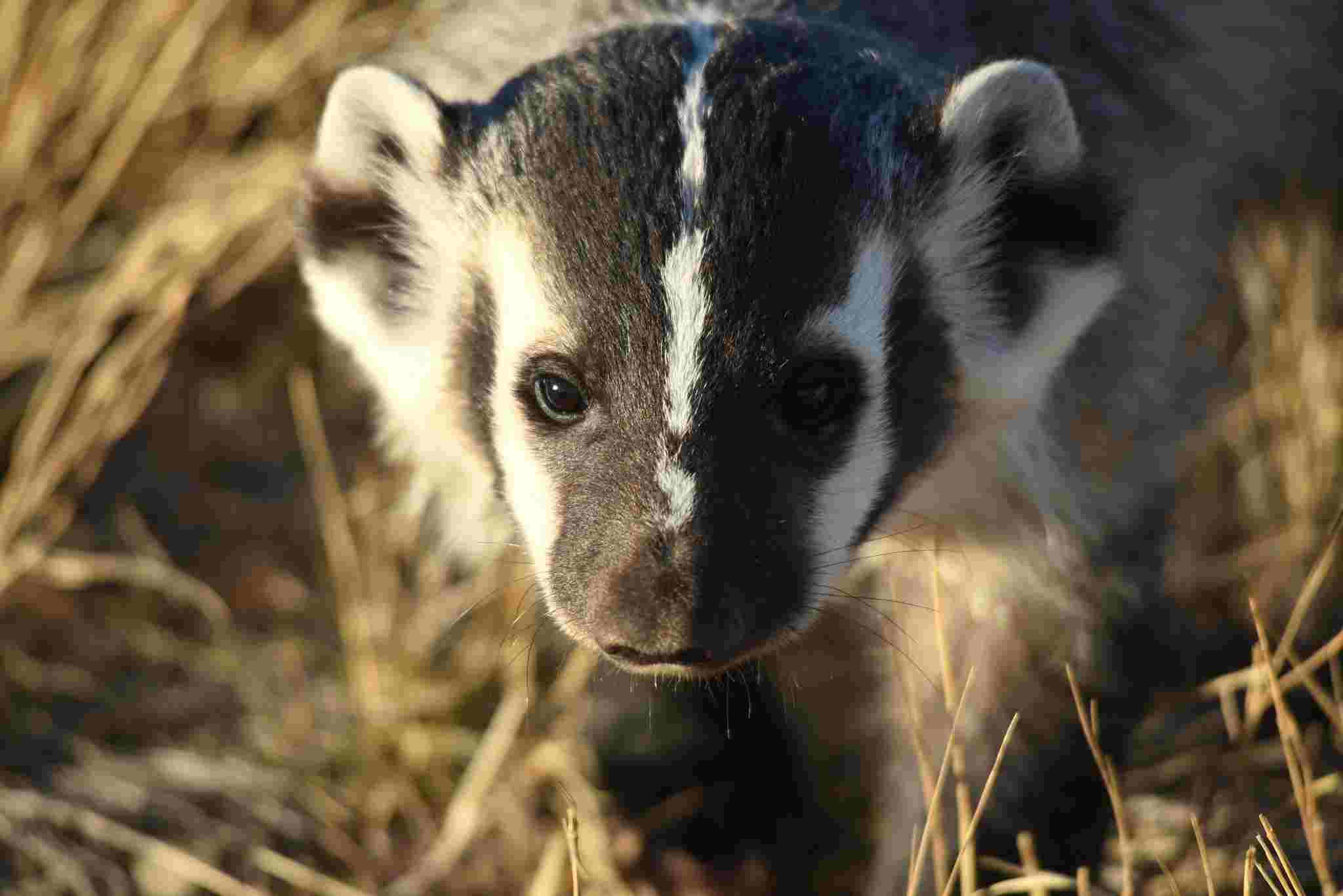
American Badger:
Caution needed in areas where encounters may occur; avoid provoking or cornering them.
European Badger:
Similar precautions apply; respect their space and avoid unnecessary interactions.
Comparison:
Precautions for both species involve respectful coexistence and minimizing potential conflicts.
Ecological Implications:
Human behavior and awareness play a role in mitigating potential negative interactions and fostering cohabitation.
22. Conservation Status:
American Badger:
Populations are relatively stable; some regional concerns may exist.
European Badger:
Generally not considered at risk, but local populations may face threats.
Comparison:
Conservation statuses vary by region, with both species facing localized challenges.
Ecological Implications:
Conservation efforts should consider regional factors affecting each badger species and address specific threats to their populations.
Summary of Comparison
Taxonomy:
American Badger: Mustelidae, Genus Taxidea
European Badger: Mustelidae, Genus Meles
Appearance:
American Badger: Grizzled gray or brown fur, white stripe on face
European Badger: Black and white fur, striped face
Size:
American Badger: 23-30 inches (58-76 cm)
European Badger: 28-37 inches (70-94 cm)
Weight:
American Badger: 9-26 lbs (4-12 kg)
European Badger: 15-33 lbs (7-15 kg)
Bite Force:
Both have strong bites, adapted for digging and hunting.
Physical Offensive Advantages:
American Badger: Strong claws, powerful bite
European Badger: Sharp claws, strong bite
Physical Defensive Advantages:
American Badger: Tough, loose skin
European Badger: Well-developed claws, strong bite
Speed:
American Badger: Up to 19 mph (30 km/h)
European Badger: Generally slower
Agility:
Both exhibit agility, American badger with rapid movements, European badger especially in burrows.
Overall Physical Capacity:
Both exhibit robust physical capacities suited for digging and hunting.
Habitat Preference(s):
American Badger: Open grasslands, meadows, agriculture
European Badger: Mixed woodlands, scrublands, pasture
Tracks:
Both show distinctive tracks with claw marks indicating digging behavior.
Lifespan:
American Badger: 4-5 years in the wild
European Badger: 8-10 years or more in the wild
Mode of Feeding:
American Badger: Carnivorous, hunting small mammals
European Badger: Omnivorous, includes various prey
Social Behavior:
American Badger: Generally solitary
European Badger: Often lives in social clans
Mode of Reproduction:
American Badger: Litters of 1-5 cubs
European Badger: Larger litters, 1-6 cubs
Parental Behavior:
American Badger: Females care for young in burrow
European Badger: Both parents contribute in communal burrow
Proximity to Human-Inhabited Areas:
American Badger: Inhabits rural areas
European Badger: Can be found in urban and suburban areas
Behavior Toward Humans:
Both tend to avoid direct interactions, but European badgers may adapt more to human presence.
Danger Posed to Humans:
Both are not inherently dangerous but may defend if threatened.
Associated Precautions:
Caution needed in encounters, avoid provoking (both).
Respect space, avoid unnecessary interactions (both).
Conservation Status:
American Badger: Relatively stable, regional concerns
European Badger: Generally not at risk, local threats possible
Conclusion
I). Similarities:
Both American and European badgers belong to the Mustelidae family and exhibit a grizzled fur pattern.
They share carnivorous feeding habits, with a focus on hunting small mammals.
Claw marks in their tracks indicate a common adaptation for digging and burrowing.
Both species have defensive mechanisms, such as strong claws and bites.
II). Differences:
American badgers are generally smaller and lighter than European badgers.
European badgers tend to have a longer lifespan compared to their American counterparts.
European badgers are more social, often living in clans, while American badgers are typically solitary.
European badgers show a higher tolerance for human-inhabited areas, including urban and suburban environments.
Reproductively, European badgers generally have larger litters compared to American badgers.


